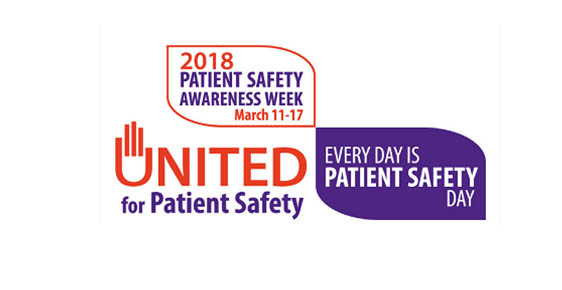National Patient Safety Awareness Week (March 11 – 17) focuses attention squarely on one thing at the top of every nurse’s list – keeping patients safe.
Minority Nurse spoke with Patricia McGaffigan, RN, MS, CPPS, vice president, safety programs at the Institute for Healthcare Improvement (IHI) about the ongoing issues around patient safety and how nurses can continue to implement positive and productive change.
While nurses provide a majority of care in inpatient settings, McGaffigan says the issue of patient safety extends to a wider setting as interprofessional teams are responsible for so many levels of care.
Because of the nurse’s role, they are especially able to impact patient care. “Nurses represent the largest segment of the healthcare workforce, in roles that range from the bedside to the boardroom,” says McGaffigan. “One specific and relatively easy way that nurses can effect change is to become educated in foundational safety science.” Nurses who aren’t trained in safety science can obtain training, and many student nurses receive the training as part of the curriculum. “Nurses are perfectly positioned to be able to identify risks and hazards in their work environments that may be mitigated before harm occurs, and this daily commitment to mindfulness about preventing harm before it happens is vital.”
As nurses, ongoing education, and maintaining and obtaining appropriate certifications help nurses provide the optimal care when they are with patients. Consistency in providing care and following a standard of care plan help patient outcomes as well.
“Nurse-sensitive indicators that reflect structure, process, and outcome are of great importance to nurses.” she says. “As a profession, we want to ensure that we have appropriate numbers of skilled nursing professionals who are able to meet the unique needs of patients and families. Process measures are focused on ensuring that we deliver the right care in a consistent and reliable manner.”
Patient harm can result when there is a lack of guidance or an absent standard to follow, says McGaffigan. For instance, harm can result when patients aren’t regularly repositioned or when oral care in ventilated patients is neglected. Other areas of particular importance include medication errors, falls, hospital-acquired infections, or complications, and other injury.
To provide the best care, nurses must also be able to care for themselves. If they are overly fatigued, do not feel supported or able to thrive in their organizations or if they are working in an organization where a culture of safety is not emphasized, patients cannot receive optimal care and nurses themselves might be at greater risk.
“Nurses are increasingly and very appropriately focused on their own physical and emotional safety, as well as cultures of safety,” she says.
The interactions that build relationships between nurses and patients are key to keeping patients safe. “Nurses are often the profession that has the most interaction with patients and families,” says McGaffigan. “We can consistently strive to identify the needs and preferences of patients and families, and also ask patients and family members what matters to them, and what they might be worried about.” McGaffigan knows this first hand. “As a former pediatric critical care nurse, one of my greatest ‘early warning systems’ was when a parent might tell me that ‘something just doesn’t feel right about my child,’” she says.
When errors do happen, a transparent process to understand what went wrong, assess the cause, and prevent future harm is essential. “Punitive cultures exacerbate reluctance to report near-misses and errors,” says McGaffigan. “Nurses can become more familiar with Surveys of Patient Safety Culture, identify areas where unit and organizational performance is stronger or weaker, and play a key role as leaders and participants in initiatives to improve scores on their survey domains.”
Patient safety continues to evolve as new medical technologies are introduced and as patient care continues to become more complex and more challenging.
“Nurses, as well as our other colleagues in healthcare, have chosen our profession because we have a core value of ensuring that our care is not only technically sound and appropriate, but is safe,” says McGaffigan. “As nursing professionals, we come to work every day to ensure nothing less than safe care. Whether we are in traditional roles at the bedside or as nursing leaders, educating our next generation of nurses, sitting on boards of directors of health care organizations, serving in formal patient safety positions, contributing to progress in the medical device and pharmaceutical industries, or more, we individually and collectively embody safety as our core value.”
Those who enter the profession do so knowing they are often a patient’s greatest advocate and a crucial partner in receiving the best care. “We are committed to creating a world where patients are free from harm,” she says, “and we advocate and anchor our healthcare system to not simply regard safety as ‘one more thing that we do,’ but understand that ‘it is the one thing that must permeate and provide the foundation for all that we do.’”
- WOC Nurses Week Highlights Specialty - April 16, 2024
- Honoring Radiology Nurses Day on April 12 - April 12, 2024
- Travel Offers New Career Possibilities - April 8, 2024



